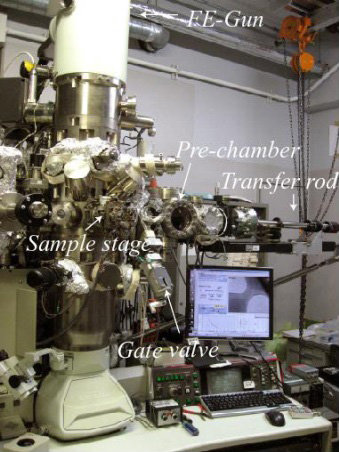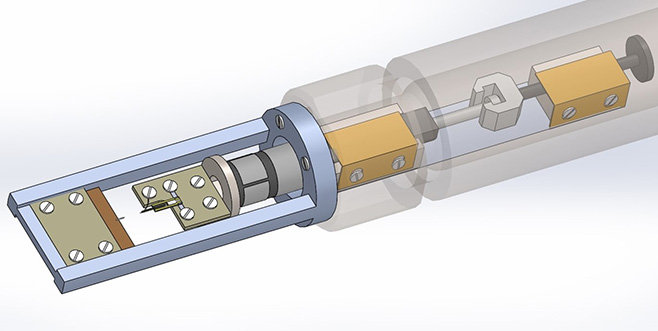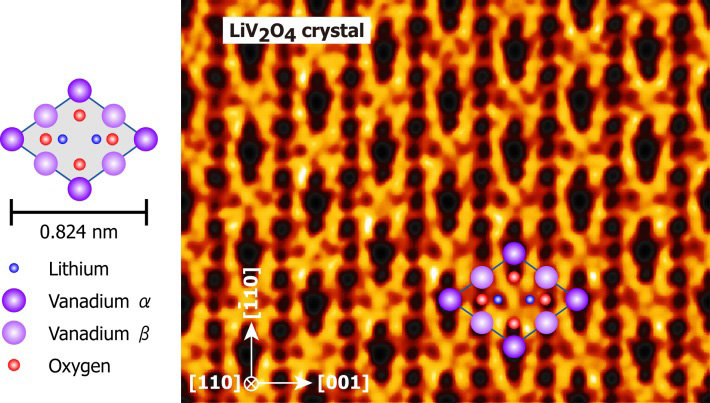
Nano-Characterization for innovation
- In-situ TEM/SEM Observation -
Laboratory on Microscopic Nano-characterization
Professor:OSHIMA Yoshifumi
E-mail:
[Research areas]
TEM/STEM, nanomaterials
[Keywords]
Skills and background we are looking for in prospective students
Our laboratory studies electrical, mechanical or electrochemical properties of nanomaterials, which has been pointed out to be strongly correlated with their atomic structures or shapes, using transmission electron microscope. Those who really want to find something new in nanomaterials' properties will be able to achieve such experiments. Your motivation and/or will are critical for accomplish your research project. If possible, you had better understand the fundamentals of mathematics and physics.
What you can expect to learn in this laboratory
You will understand fundamentals of solid state physics deeply through experiments. The TEM image is information in real space and the diffraction is information in reciprocal space. Both informations are investigated in order to clarify the atomic structure of the sample, which make you understand the relationship between real and reciprocal spaces deeply. Also, you will master good skills, for example, TEM operation, Vacuum equipment operation, programming (LabView) and so on. Furthermore, you will be able to develop in-situ TEM holder by yourself, if you join the doctoral course, which is great advantage for you.
【Job category of graduates】 Manufacture, Analytics company, Research laboratory
Research outline
 |
 |
||
| Fig. 1 A photo of ultra-high vacuum TEM. Only a few UHV-TEM works in the world. | Fig. 2 A photo of a AFM holder, which can be installed in the TEM. We developed such in-situ TEM holder by ourselves. | ||
 Fig. 3 A typical annular bright field (ABF) image of LiV2O4 crystal viewing from the [110] direction. Lithium ions are visualized in the image. |
|||
We have developed an experimental system of combining an atomic force microscope (AFM) with ultra-high vacuum transmission electron microscope (TEM) (see Figs. 1 and 2). Using this system, we can directly obtain relationship between atomic structure and mechanical strength of nano-scaled material. Such an experimental system is quite unique in the world and advantage for us.
We mainly use TEM and/or STEM, because these are powerful tools to observe materials at an atomic scale (see Fig. 3). We have found that very thin metal nanoparticles showed different structural phases from their bulk crystal structure and also very thin metal nanowire became tubular structure like carbon nanotube, for example. Recent advanced TEM enables us to visualized light element at an atomic scale.
We will devise unique experimental systems based on TEM and clarify relationship between atomic structure and physical and/or chemical properties of frontier materials. Our final goal is discovery of frontier materials, which is based on understanding physical and/or chemical properties at an atomic scale.
Key publications
- J. Zhang, et al.,"Atomic scale mechanics explored by in situ transmission electron microscopy with a quartz length-extension resonator as a force sensor", Nanotechnology 31 (2020) 205706.
- C. Liu, et al.,"Origin of nonlinear current-voltage curves for suspended zigzag edge graphene nanoribbon", Carbon 165 (2020) 476.
- Y. Chiew, et al.,"Ordering of Intercalated Fe Atoms in FexTiS2 Structures Clarified using Transmission Electron Microscopy", J. Phys. Soc. Jpn. 89 (2020) 074601.
Equipment
Ultra High Vacuum Transmission Electron Microscope
In-situ TEM holder (home-made)
Vacuum chamber
Frequency Modulation Atomic Force Microscopy Controler
Teaching policy
We held a regular meeting every week, in which we read a selected paper, discuss about research progress of assigned student and lean the fundamental of solid state physics with each other. I recommend mutual learning and/or discussion (a student teaches the others and vice versa) in order to understand solid state physics deeply. I also recommend that students attend domestic or international meetings and have presentations in order to improve communication skill.
[Website] URL:https://www.jaist-oshima-labo.com/english/